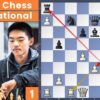Selecting entertainment shouldn’t involve trial-and-error frustration. This systematic guide dissects four premier 1Win offerings—Towers, Crash, Mines, and Dog House—through detailed performance analysis across essential categories, revealing which game aligns perfectly with your unique preferences and circumstances.
Category 1: Session Duration Flexibility – Finding Your Time Sweet Spot
Real-world gaming happens in fragmented time windows. Understanding how each title adapts to different timeframes prevents disappointment and maximizes satisfaction.
Lightning-Fast Windows (Under 60 Seconds) The 1win crash platform crushes all alternatives when microseconds matter. Individual rounds complete in 5-12 seconds, transforming coffee preparation time or elevator rides into genuine entertainment opportunities. The 1win crash game delivers complete emotional arcs—anticipation, tension, resolution—faster than competitors finish loading screens.
Competing options struggle here. The 1win towers requires 90+ seconds minimum for meaningful progress. The 1win mines format needs similar durations for satisfying grid exploration. The dog house 1win technically permits ultra-brief sessions but delivers hollow experiences lacking context or payoff potential.
Brief Intervals (1-5 Minutes) The win crash game maintains supremacy, accommodating 25-75 complete rounds within five minutes. However, the tower rush 1win structure becomes practical, supporting 3-5 climbing campaigns. The 1win mines game achieves viability through compact 3×3 grids enabling quick tactical puzzles. Dog house 1 win provides 20-40 spins—sufficient quantity for occasional feature activations creating satisfying session conclusions.
Standard Sessions (5-20 Minutes) Performance equalizes substantially. The crash 1win delivers hundreds of repetitions but risks monotony without strategic adjustment. Win win towers flourishes here, permitting multiple complete campaigns with difficulty modifications preventing staleness. The 1win mines game reaches optimal conditions with medium grids balancing complexity and completion probability. Dog house 1 win offers comfortable spin volumes enabling bonus round encounters without time pressure.
Marathon Gaming (20+ Minutes) The mines 1win experience dominates prolonged engagement through strategic complexity preventing boredom. Expansive grids with elevated mine counts create campaigns requiring 20-40 minutes of focused navigation. The tower rush 1win supports extended play through escalating challenges and campaign variety, though pattern familiarity eventually reduces novelty. The win crash game demands strategic diversification or social focus maintaining interest past 20 minutes. Dog house 1 win accommodates unlimited duration through autoplay functionality but may lack engagement depth compared to strategic alternatives.
Duration Mastery Leaders: Crash 1win conquers speed requirements, mines 1win dominates extended engagement, win win towers balances flexibility across timeframes.
Category 2: Cognitive Load Requirements – Matching Mental Energy Levels
Gaming sessions occur during varying mental states. This analysis maps cognitive demands helping players select appropriately for current energy levels.
Maximum Focus Demands The 1win mines game requires supreme mental engagement. Every tile choice necessitates probability recalculation incorporating revealed grid information. Concentration lapses cascade catastrophically—one analytical error potentially nullifies 15-20 minutes of careful advancement. Effective multitasking becomes impossible during serious mines 1win play. The 1win mines demo quickly demonstrates this intensity, with players recognizing concentration requirements within initial trial sessions.
The 1win towers demands moderate sustained focus. Each tier presents discrete decision moments rather than continuous calculation requirements. Players can briefly disengage between levels without severe performance consequences. The tower rush 1win format tolerates occasional attention lapses that mines 1win absolutely cannot accommodate.
Intermediate Concentration Zones The 1win crash creates fascinating cognitive dynamics. Individual rounds demand intense but brief attention—3-12 seconds maximum focus followed by complete mental recovery periods. This interval pattern enables effective task-switching between rounds. The win crash game suits players desiring engagement bursts without sustained concentration obligations. The crash 1win structure accommodates message checking, conversations, or parallel activities between rounds without performance degradation.
Minimal Mental Investment The dog house 1win requires virtually zero sustained concentration. Players can activate literal autopilot (autoplay functionality) and figurative mental cruise control simultaneously. The dog house 1 win format permits concurrent activities—streaming content, discussions, meals—without gameplay quality reduction. This minimal requirement profile serves specific relaxation needs perfectly but won’t satisfy players seeking intellectual stimulation.
Cognitive Demand Leaders: Mines 1win requires maximum focus, tower rush 1win needs moderate sustained attention, crash 1win delivers burst intensity, dog house 1 win demands minimal mental investment.
Category 3: Volatility Profiles – Consistency vs Jackpot Hunting
Payout pattern preferences vary based on personality, bankroll size, and session objectives. This comparison examines reward distribution characteristics.
Steady Growth Patterns The 1win towers with conservative approaches delivers the smoothest profit trajectories. Players withdrawing after 2-3 successful tiers achieve success rates exceeding 65-75% with predictable modest returns. This reliability enables precise bankroll forecasting where session outcomes stay within tight ranges. Win win towers serves players prioritizing capital protection and incremental growth over lottery-style pursuits.
The 1win mines game employing cautious strategies (minimal mines, prompt withdrawals) produces comparable steadiness. Players revealing 3-6 safe tiles before collecting maintain high completion rates with controlled profit margins. This defensive mines 1win methodology mirrors conservative tower rush 1win approaches in outcome predictability.
Balanced Variance Territory The dog house 1win on medium volatility configurations creates equilibrium between frequency and magnitude. Hit rates remain acceptable (28-38% of rotations) with periodic substantial bonus multipliers. This middle path attracts players wanting excitement possibilities without extreme swings. The dog house 1 win medium configuration provides sufficient variance for entertainment without catastrophic bankroll destruction risks.
High-Risk Jackpot Territory The 1win crash with aggressive tactics (6x+ objectives) generates extreme fluctuations. Players might absorb 18-25 consecutive losses before capturing a massive 9x or 15x multiplier exceeding all previous deficits combined. This feast-or-famine pattern attracts specific personality types who find steady accumulation unstimulating. The crash 1win format enables the highest single-round multiplier potential among these options—occasionally reaching 75x, 150x, or beyond before termination.
Aggressive 1win mines game tactics (dense mine placement, deep grid exploration) yield similar explosive possibilities. Successfully traversing grids with 18-24 mines produces extraordinary multipliers, but failure probabilities exceed 75-85%. The win crash game and high-risk mines 1win strategies serve thrill-seekers with substantial reserves tolerating dramatic oscillations.
Volatility Profile Leaders: Win win towers and conservative mines 1win for predictability, dog house 1 win for equilibrium, crash 1win and aggressive mines 1win for explosive variance.
Category 4: Mastery Potential – Skill Development Opportunities
Long-term satisfaction often connects with improvement possibilities. This evaluation assesses skill expression and development potential.
Maximum Mastery Depth The 1win mines offers the richest skill development journey. Beginners and experts demonstrate radically different performance across extended periods. The 1win mines demo enables quantifiable skill tracking—players monitoring average successful tile reveals before withdrawals observe concrete improvement over weeks and months. Pattern recognition speed, probability calculation efficiency, and risk calibration all advance through dedicated practice.
Expert mines 1win players cultivate sophisticated analytical frameworks tracking safe tile probabilities as grids transform. This intellectual depth creates genuine competitive advantages where skilled participants achieve measurably superior long-term outcomes versus casual players.
Intermediate Skill Expression The tower rush 1win format allows meaningful skill demonstration through probability assessment and risk governance. However, linear progression mechanics limit complexity compared to mines 1win spatial dynamics. The Towers 1Win slot mastery path reaches ceilings faster—players achieve near-optimal execution within 12-25 hours focused play, after which improvements become incremental.
Win win towers rewards disciplined capital management and probability fluency but doesn’t demand the perpetual learning that keeps mines 1win continuously challenging even for veterans.
Minimal Skill Influence The 1win crash provides limited conventional skill development. Mathematical analysis offers negligible advantages since crash points follow genuinely random distributions. Instead, the crash 1win format develops psychological capabilities—emotional regulation, impulse resistance, discipline maintenance. These mental competencies matter but differ fundamentally from analytical mastery that mines 1win cultivates.
The win crash game rewards execution consistency rather than strategic sophistication. Players perfectly implementing simple approaches (auto-withdraw at 2.0x) achieve comparable results to those employing complex methodologies—differences emerge in emotional consistency rather than intellectual superiority.
Negligible Skill Requirements The dog house 1win eliminates skill factors almost completely. Veterans achieve essentially identical outcomes to complete novices given equivalent luck. Understanding feature mechanics creates marginal benefits (anticipating free spin likelihood), but this knowledge doesn’t materially influence results.
Dog house 1 win intentionally removes skill components, attracting players desiring entertainment without performance pressure or improvement obligations.
Skill Development Leaders: Mines 1win provides maximum mastery depth, tower rush 1win offers intermediate expression, crash 1win builds psychological capabilities, dog house 1 win requires zero skill investment.
Category 5: Community Integration – Social vs Solitary Experiences
Gaming motivations include social dimensions varying across platforms. This assessment evaluates community connectivity levels.
Maximum Community Engagement The crash 1win dominates social integration through live community transparency. Players observe hundreds of concurrent participants’ wagering decisions and withdrawal timings. This visibility generates shared emotional journeys—collective disappointment when crashes strike at 1.3x, mutual excitement when multipliers surpass 12x. The win crash game cultivates implicit community through observable behavioral patterns without requiring direct communication.
Organic social learning emerges as players witness effective strategies through others’ withdrawal patterns. The 1win crash game community creates informal education where observant participants learn from veterans without explicit instruction.
Asynchronous Competition Frameworks The 1win towers, mines 1win, and dog house 1win provide leaderboard mechanisms enabling indirect competition. Players compare accomplishments asynchronously without real-time engagement. This architecture suits players wanting competitive elements without social pressure during active gameplay.
The tower rush 1win and 1win mines game leaderboards recognize strategic achievements (maximum tier attained, longest mine sequence completed) creating accomplishment-focused competition. Dog house 1 win leaderboards track largest payouts, though luck-dependency reduces competitive authenticity versus skill-based alternatives.
Complete Isolation Options Without leaderboard participation, the 1win towers, 1win mines, and dog house 1win function as purely individual pursuits. Many players prefer this privacy, seeking personal challenges without social comparison anxiety. The tower rush 1win, 1win mines game, and dog house 1 win formats enable complete social disconnection when preferred.
Community Integration Leaders: Crash 1win delivers robust live community, while win win towers, mines 1win, and dog house 1 win offer optional asynchronous competition or total social isolation.
Category 6: Capital Efficiency – Stretching Limited Budgets
Financial constraints significantly impact enjoyment quality. This comparison evaluates performance with restricted funding.
Optimal Small Bankroll Performance Conservative tactics in the 1win towers and mines 1win maximize session duration with limited capital. The tower rush 1win approach of withdrawing after 2-3 successful tiers generates frequent modest wins sustaining bankrolls effectively. Similarly, the 1win mines game with minimal mine configurations and prompt exits creates sustainable profit rhythms.
Win win towers particularly excels for conservative participants—the capacity to secure profits after every successful tier means bankrolls rarely face catastrophic single-session depletion. Modest starting capital ($25-60) can support hours of entertainment through disciplined execution.
Moderate Capital Efficiency The dog house 1win on low volatility configurations provides reasonable sustainability. Frequent small victories offset losses gradually, though inevitable negative variance sequences require adequate reserves. Medium-tier bankrolls ($60-120) enable comfortable multi-hour sessions without excessive depletion anxiety.
Substantial Capital Requirements The 1win crash with aggressive targeting creates significant capital pressure. Pursuing 6x+ multipliers means enduring frequent total losses—players might lose 25-35 consecutive rounds before landing target multipliers. This volatility demands robust bankrolls ($120-250+) for sustainable participation without premature exhaustion.
Similarly, aggressive 1win mines game strategies (high mine concentrations, deep exploration) require substantial reserves. The win crash game and high-risk mines 1win approaches suit players with comfortable financial cushions tolerating dramatic fluctuations.
Capital Efficiency Leaders: Conservative tower rush 1win and mines 1win tactics maximize limited bankroll longevity, dog house 1 win provides moderate efficiency, crash 1win demands substantial reserves.
Category 7: Entry Accessibility – Learning Investment Required
Initial difficulty influences which games suit different experience levels. This comparison evaluates accessibility across expertise spectrums.
Zero Learning Barrier The dog house 1win offers instant comprehension. Players grasp complete mechanics within 45 seconds—activate spin, observe outcomes. No tutorials required, no complex systems, no strategy documentation needed. Dog house 1 win eliminates all entry obstacles, making it ideal for gambling novices or players seeking zero cognitive investment.
Rapid Learning Trajectory The 1win crash presents straightforward core mechanics—withdraw before crash—comprehensible within minutes. However, cultivating effective approaches requires experimentation across dozens of rounds. Most players achieve basic proficiency within 40-90 minutes while continued optimization extends across weeks. The crash 1win format balances accessibility with depth—simple to begin, challenging to perfect.
Moderate Learning Commitment The 1win towers introduces probability principles and risk-reward evaluation requiring modest learning duration. The tower rush 1win tutorial guides newcomers effectively, with most achieving comfortable proficiency within 1-3 hours. Win win towers occupies the accessibility sweet spot—neither instant comprehension nor prohibitive complexity.
Substantial Learning Investment The 1win mines presents the steepest learning gradient. Comprehending grid probability dynamics, spatial pattern recognition, and optimal navigation strategies demands considerable investment. The 1win mines demo serves critical educational functions—serious players invest 4-6 hours in practice mode before attempting real-stakes play.
The mines 1win complexity threshold filters casual participants but attracts those viewing gaming as skill development opportunity. This self-selection creates engaged player communities who appreciate intellectual challenges.
Accessibility Leaders: Dog house 1 win offers zero-barrier entry, crash 1win provides rapid fundamentals, tower rush 1win requires moderate commitment, mines 1win demands substantial learning investment.
Category 8: Presentation Quality – Aesthetic and Sensory Experience
Visual and auditory components contribute meaningfully to overall satisfaction. This comparison evaluates presentation excellence across titles.
Premium Production Values The dog house 1win delivers superior aesthetic experiences. Detailed canine-themed visuals, fluid animations, and cohesive audio design create polished environments. Production quality enhances entertainment value beyond mechanical gameplay. Dog house 1 win prioritizes sensory engagement through aesthetic excellence.
Functional Design Philosophy The crash 1win, 1win towers, and mines 1win interfaces emphasize clarity over decoration. Streamlined designs direct attention toward gameplay mechanics rather than visual embellishments. This minimalist philosophy appeals to players valuing substance over style, functionality over aesthetics.
The tower rush 1win, 1win crash game, and 1win mines game formats intentionally avoid visual complexity that might distract from strategic decision-making. Probability information and game state displays receive visual priority over decorative elements.
Presentation Leaders: Dog house 1 win excels in aesthetic richness, while crash 1win, win win towers, and mines 1win prioritize functional clarity.
Selection Framework: Identifying Your Ideal Match
Select Crash 1win for: Maximum velocity, community connectivity, explosive variance, minimal time requirements, burst mental engagement, psychological skill cultivation
Select Towers 1win for: Balanced adaptability, consistent returns, moderate skill demonstration, controlled risk governance, sustainable limited-capital play, strategic yet accessible gameplay
Select Mines 1win for: Maximum strategic complexity, skill ceiling opportunities, extended focused sessions, analytical challenges, mastery journeys, controlled explosive variance
Select Dog house 1win for: Zero cognitive requirements, immediate accessibility, passive entertainment, premium aesthetics, relaxation objectives, luck-based experiences
Conclusion: Intelligent Selection Through Systematic Analysis
This comprehensive comparison reveals fundamental distinctions separating these titles. The 1win crash player seeking rapid excitement operates in different contexts than the 1win mines player pursuing intellectual challenges. Both differ from the 1win towers player desiring balanced engagement or the dog house 1win player seeking passive relaxation.
Strategic selection recognizes these titles serve complementary rather than competing functions. The same individual might select the win crash game during brief work intervals, mines 1win for evening strategic sessions, tower rush 1win for moderate lunch engagement, and dog house 1 win for pre-sleep unwinding. The 1win mines demo particularly enables risk-free capability development before real-stakes commitment.
Rather than declaring universal champions, this systematic analysis empowers informed matching between player requirements and optimal game characteristics—ensuring entertainment satisfaction through strategic selection aligned with specific contexts, moods, and objectives.








